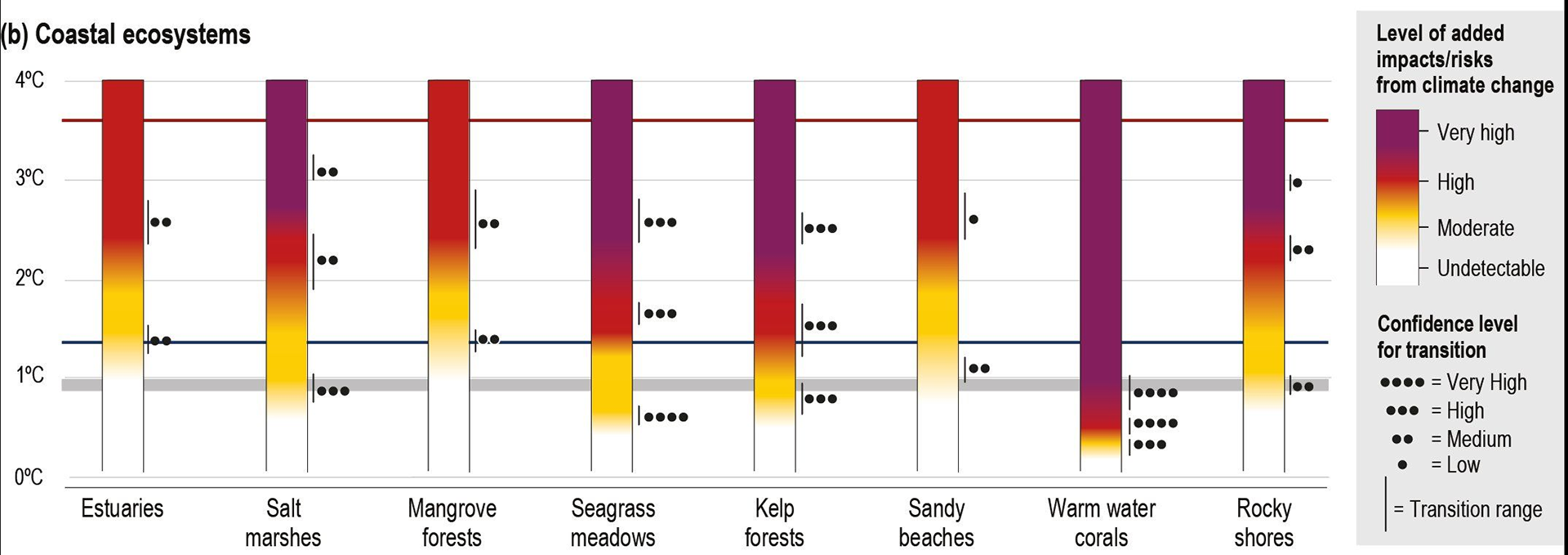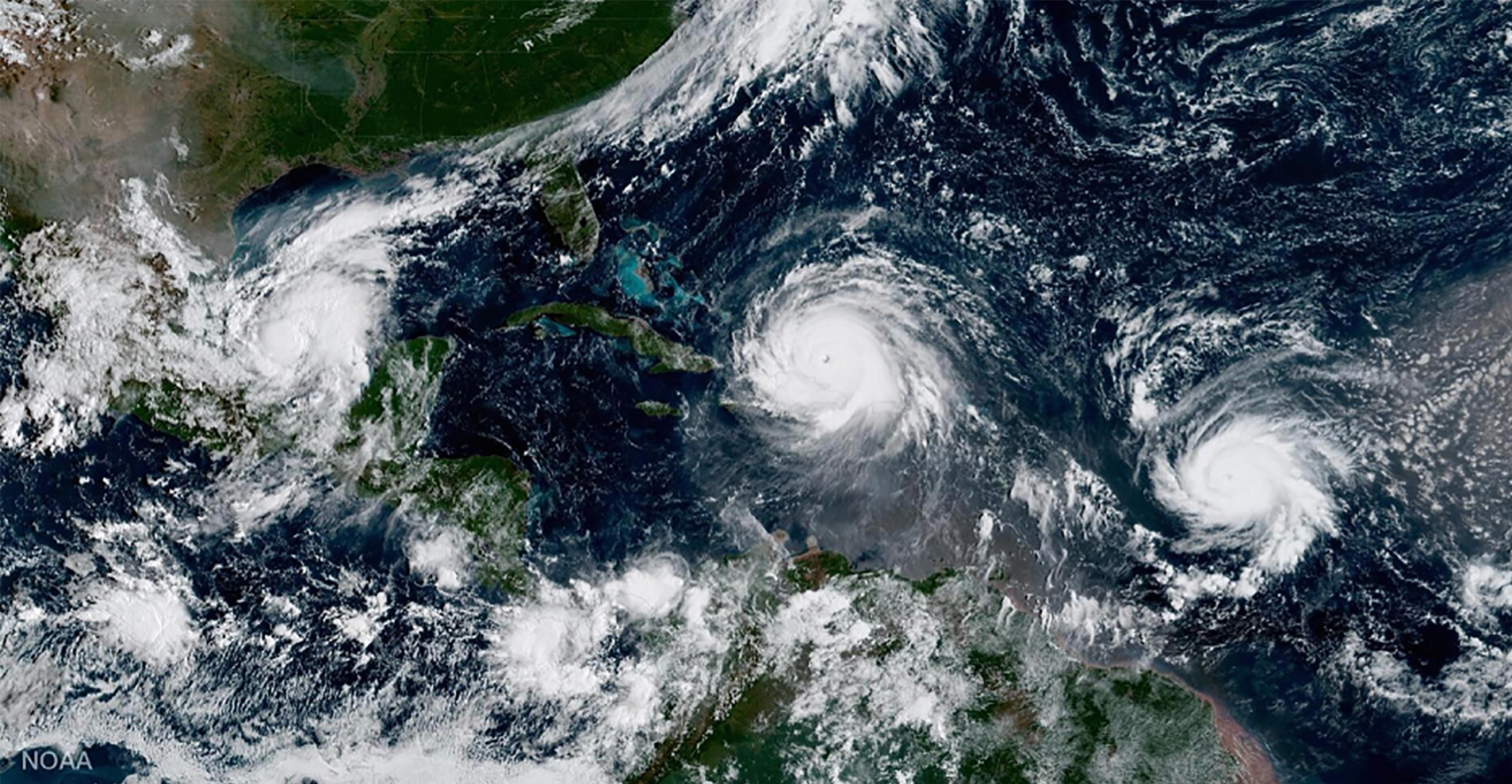Climate and Ocean Change
There is strong consensus that the world is experiencing global climate change, that the rate of climate change is increasing, and that much of this change is due to human activities, such as the burning of fossil fuels, deforestation, and agriculture. Atmospheric temperatures are projected to increase by about 2.5°C by 2100. Associated increases in ocean temperatures are predicted to increase the intensity and severity of coral bleaching events and lead to more powerful storms and rising sea level. These projections raise major concerns about the future of coral reefs worldwide.

Risk scenarios for coastal ecosystems based on observed and projected climate impacts. ‘Present day’ (grey line) corresponds to the 2000s, whereas the different greenhouse emissions scenarios, RCP2.6 (blue line) and RCP8.5 (red line), correspond to 2100. Multiple climate hazards are considered, including ocean warming, deoxygenation, acidification, changes in nutrients, particulate organic carbon flux, and sea-level rise. Source: Bindoff et al. 2019
Sea-Level Rise
Global sea-level rise is caused by two main factors: thermal expansion and melting of ice sheets, both of which are exacerbated under a warming climate. Over the last half century, the global average sea level rose by about 2-3 mm per year. ref Based on this rate, many scientists suggest that sea-level rise will have only negligible impacts on coral reefs because the projected rate and magnitude of sea-level rise are within the potential accretion rates (i.e., growth rate) of most coral reefs and many reefs are currently subjected to tidal regimes of several meters. ref However, at local scales, sea-level rise is likely to increase sedimentary processes that potentially interfere with photosynthesis, feeding, recruitment, and other key physiological reef processes.
El Niño Southern Oscillation (ENSO)
The El Niño Southern Oscillation (ENSO) is a periodic shift of the ocean-atmosphere system in the tropical Pacific that impacts weather around the world. It happens every 3-7 years (5 years on average) and typically lasts nine months to two years. It is associated with floods, droughts, and other global disturbances. ENSO events are a natural process and have been present for thousands if not millions of years. ENSO events are not caused by climate change, they are caused by the interaction between the surface layers of the ocean and the overlying atmosphere in the tropical Pacific. However, it is certainly possible that global warming will change the way the El Niño cycle behaves.
Changes in Storms and Precipitation
Since the mid-1970s, global estimates of the potential destructiveness of tropical storms show an upward trend strongly correlated with increasing tropical sea-surface temperature. ref The number of strong tropical storms (Category 4 and 5) increased by about 75% since 1970, with the largest increases observed in the Indian, North, and Southwest Pacific Oceans. The frequency of strong tropical storms in the North Atlantic has also been above normal over the last decade. However, improvements in our ability to observe storms may have biased these estimates.

Multiple tropical storms over the Caribbean. Photo © National Oceanic and Atmospheric Administration
If tropical storms increase in intensity, then coral reefs will need longer times for recovery from impacts between storm events. Direct physical impacts from storms include erosion and/or removal of the reef framework, dislodgement of massive corals, coral breakage, and coral scarring by debris. Associated increases in precipitation may also lead to greater coral damage due to increased flooding events, associated terrestrial runoff of freshwater and dissolved nutrients from coastal watersheds, and changes in sediment transport (leading to smothering of corals).
Resources
Coral Reef Resilience Online Course, Lesson 2: Threats to Coral Reefs
Climate Change Impacts to Coral Reefs
NOAA Coral Reef Watch Satellites and Coral Bleaching
Nature Protects People Learning Platform (based on The Blue Guide for Coastal Resilience)
Efecto del Huracán Delta en los arrecifes del Norte de Quintana Roo
